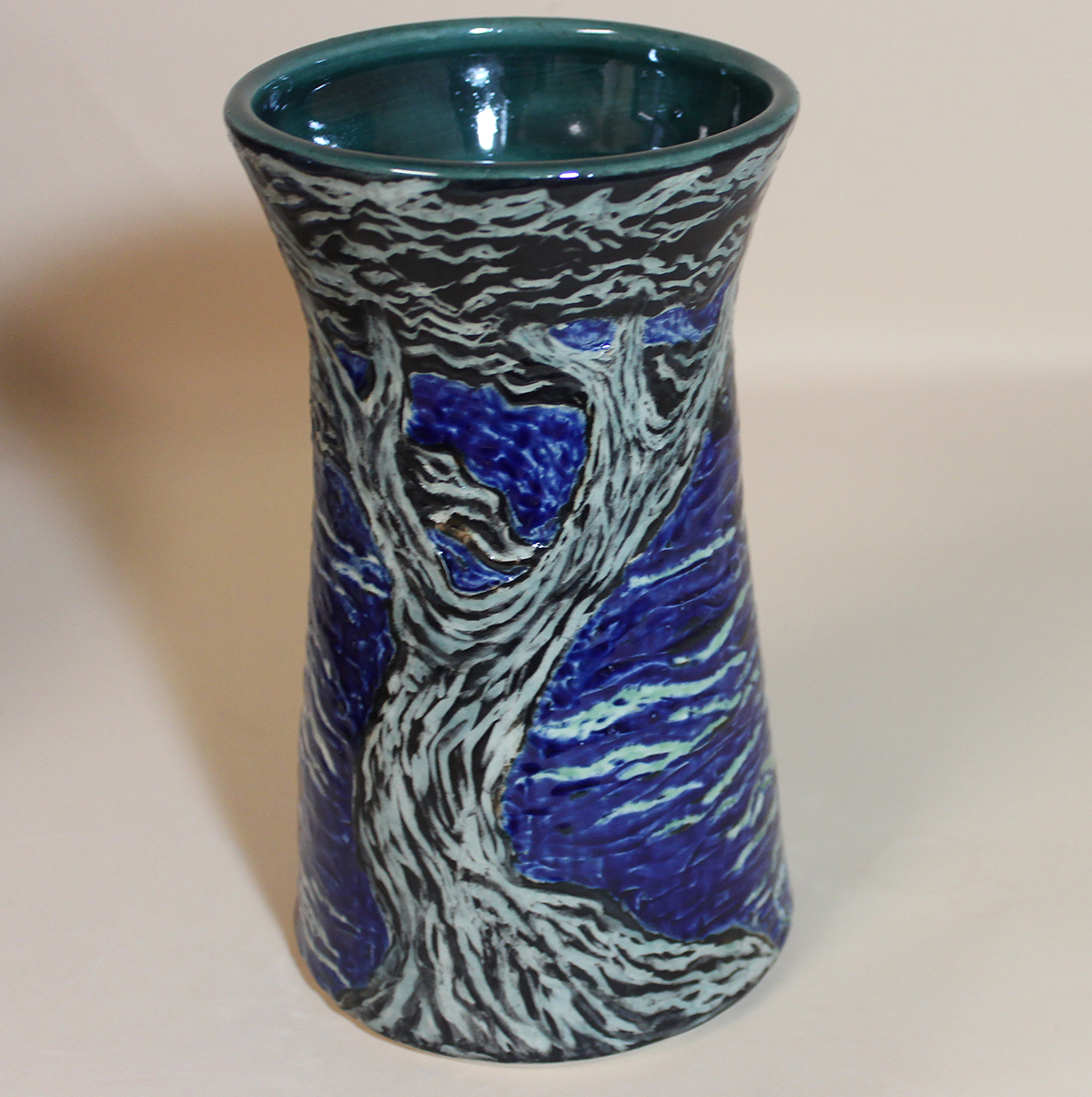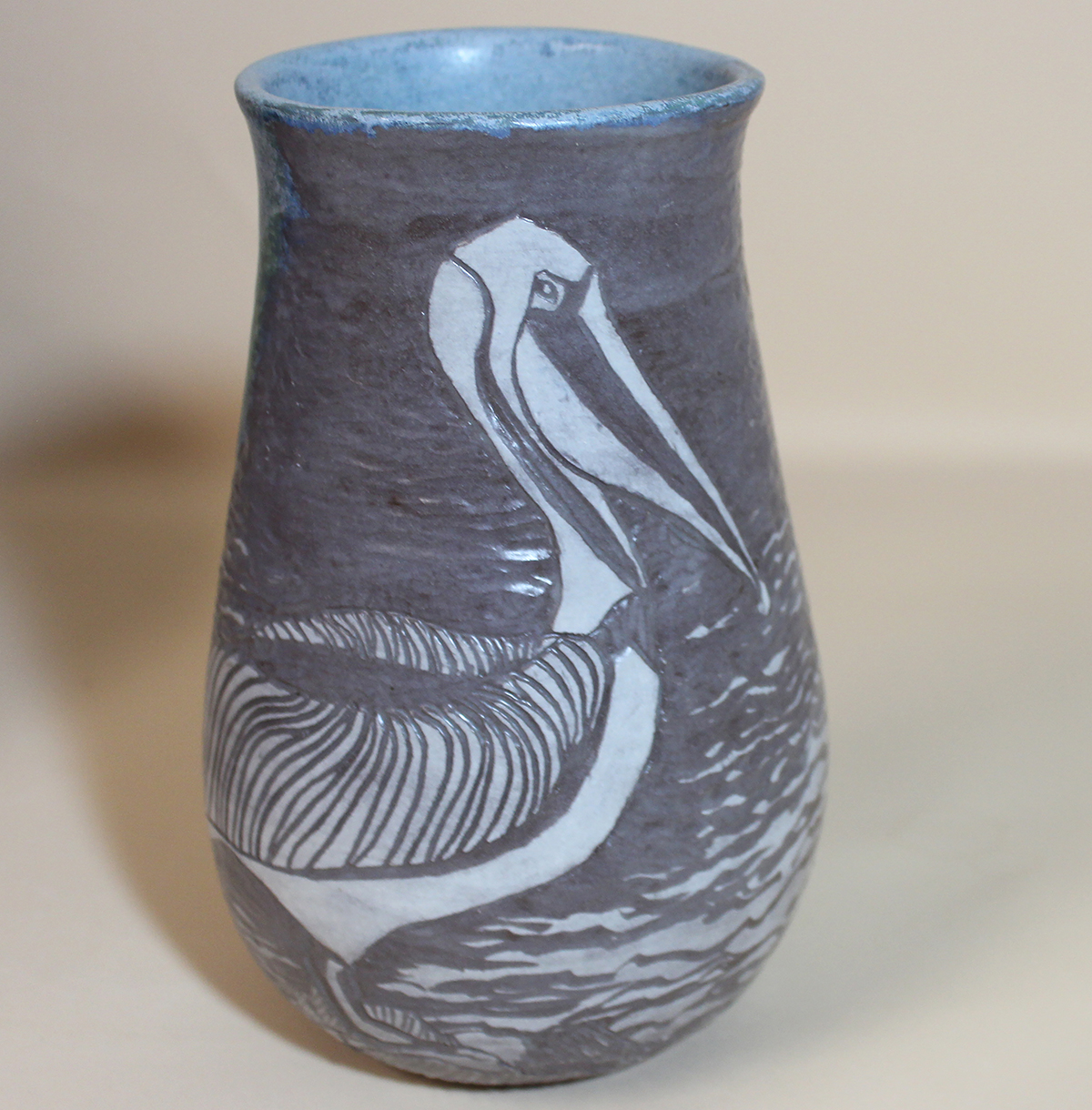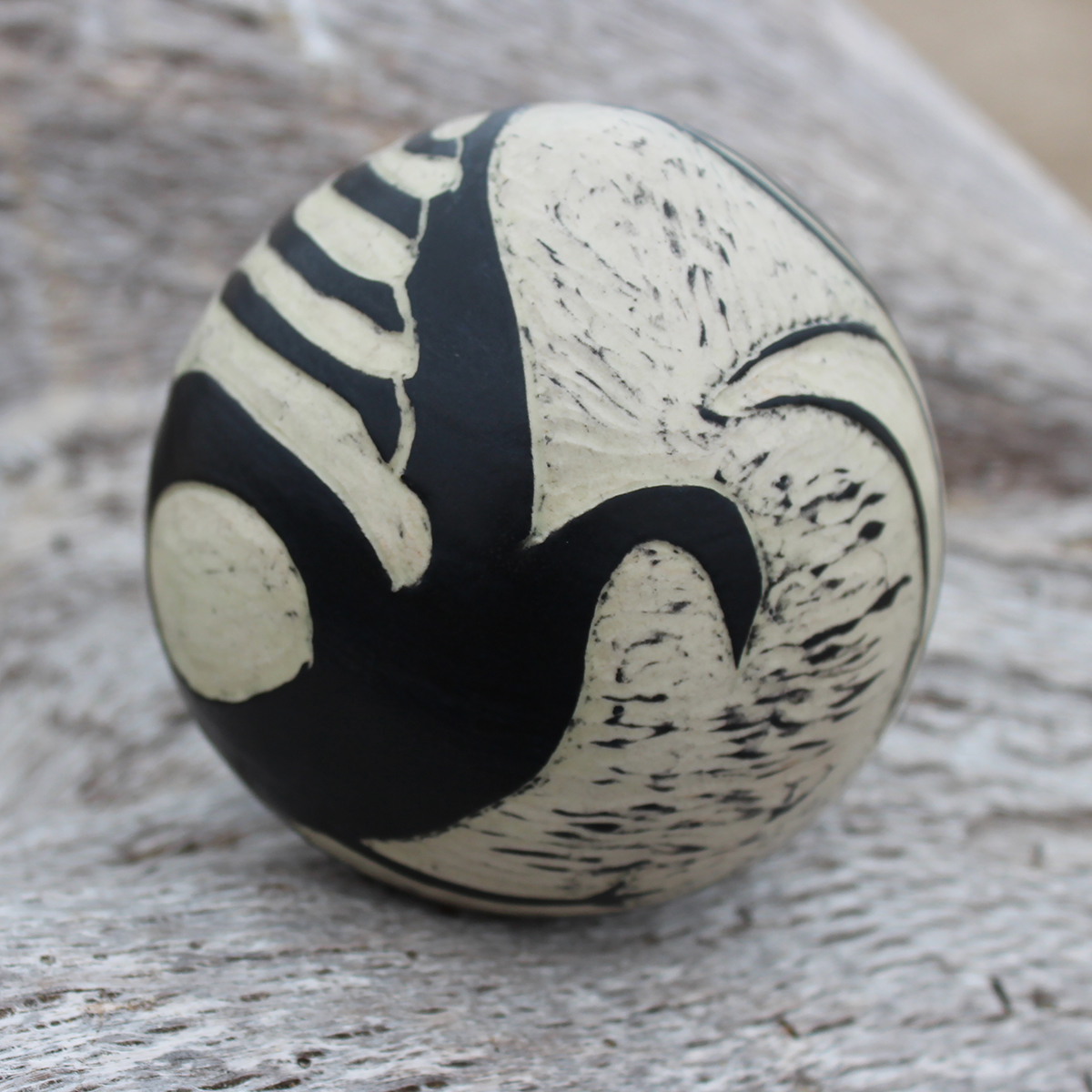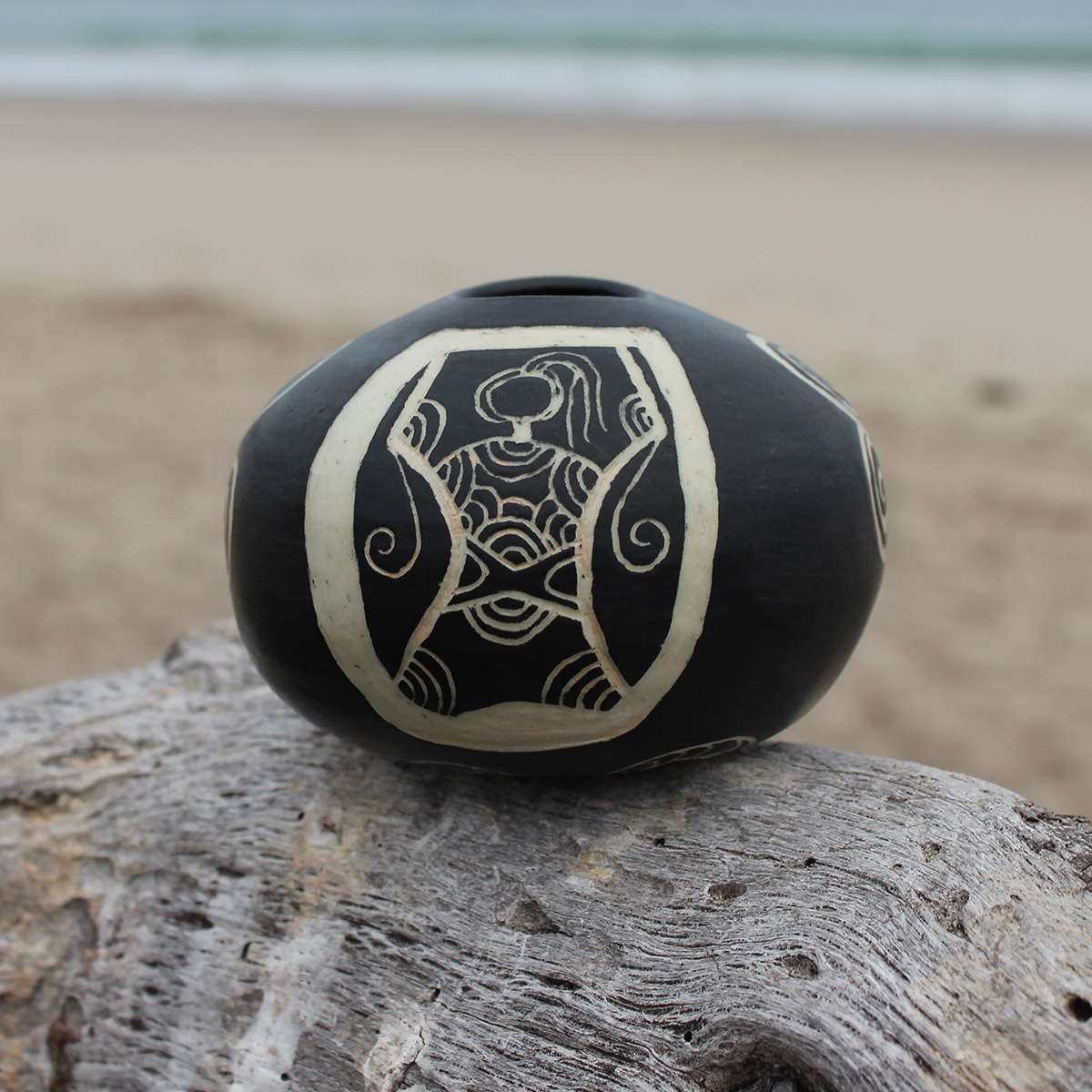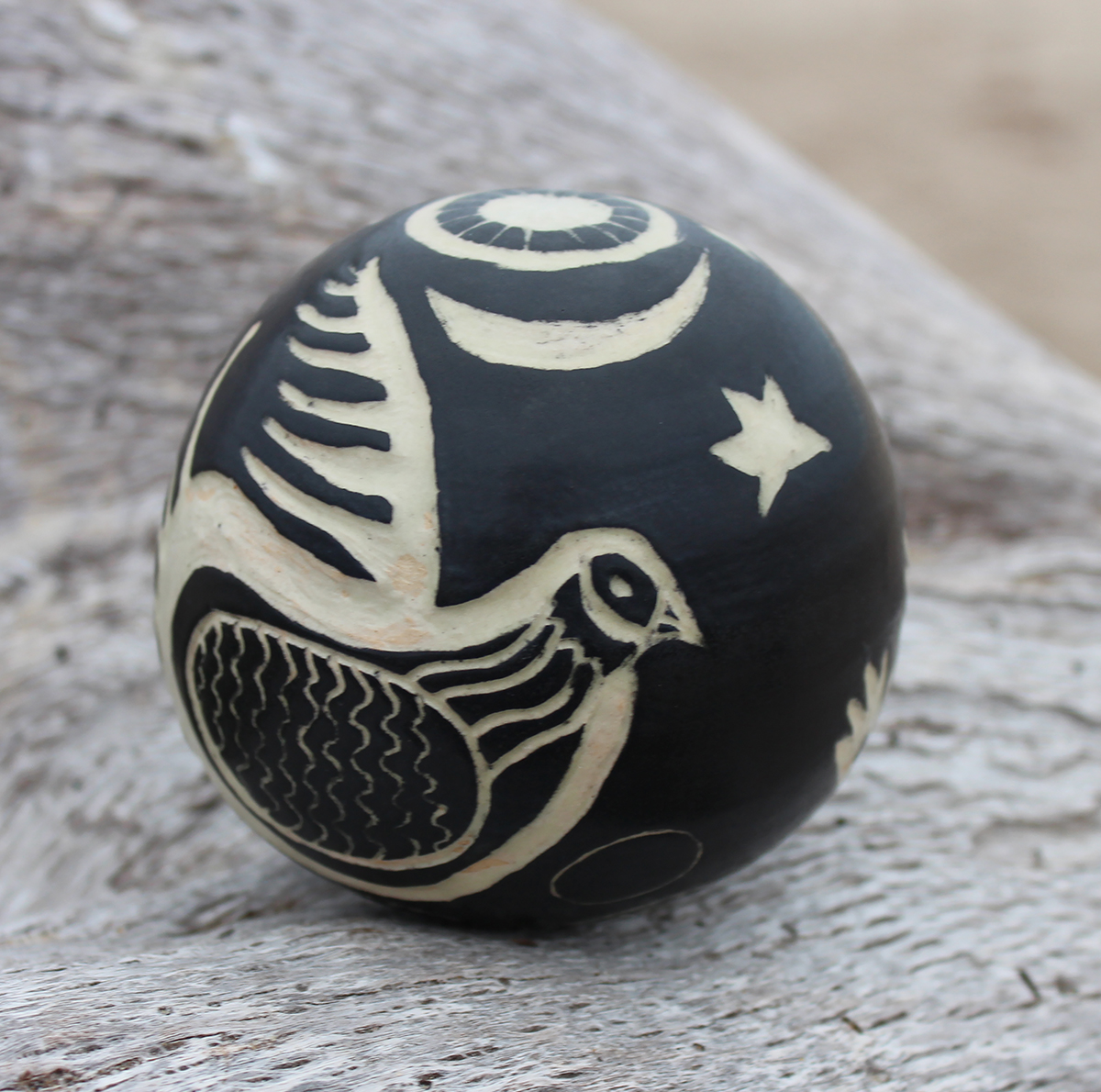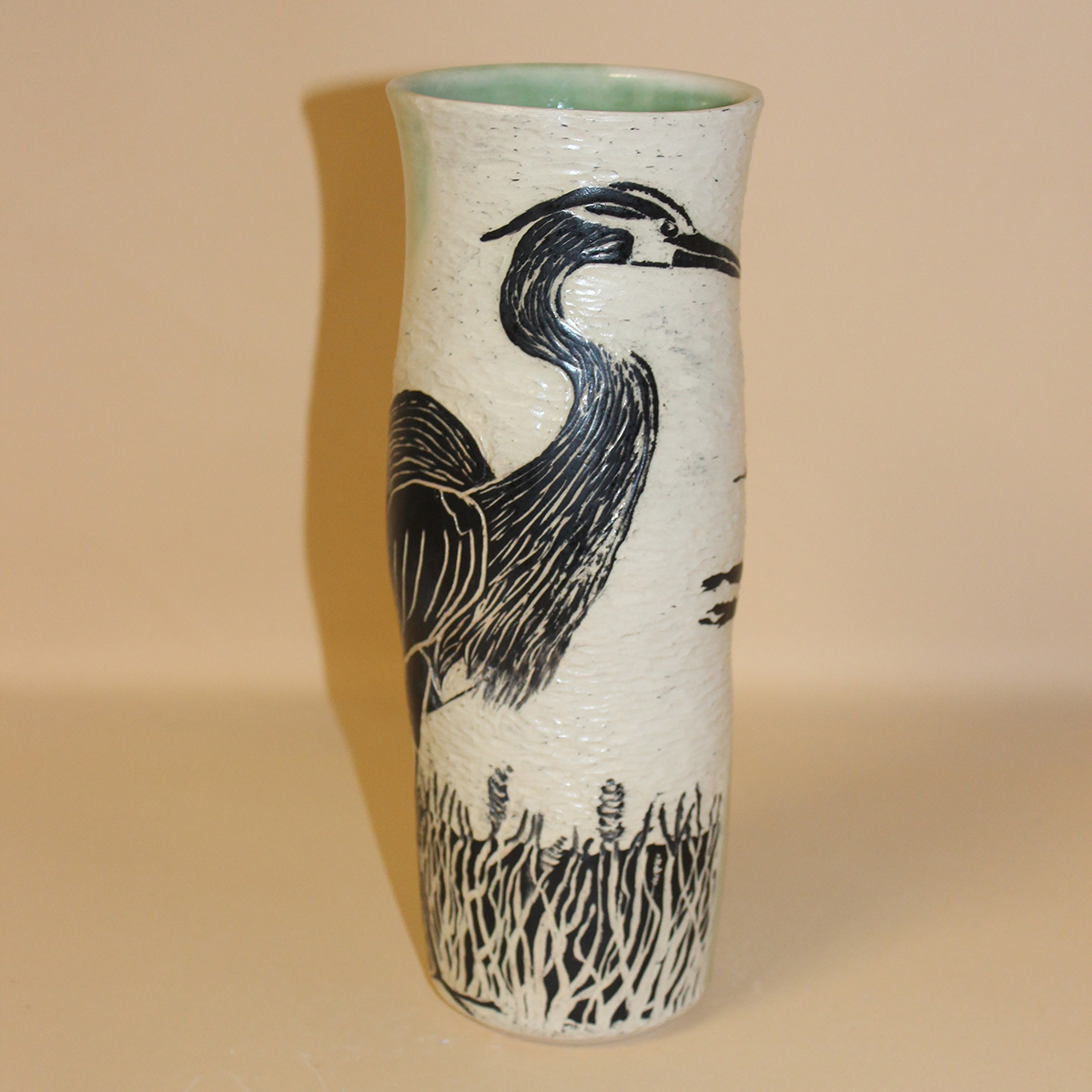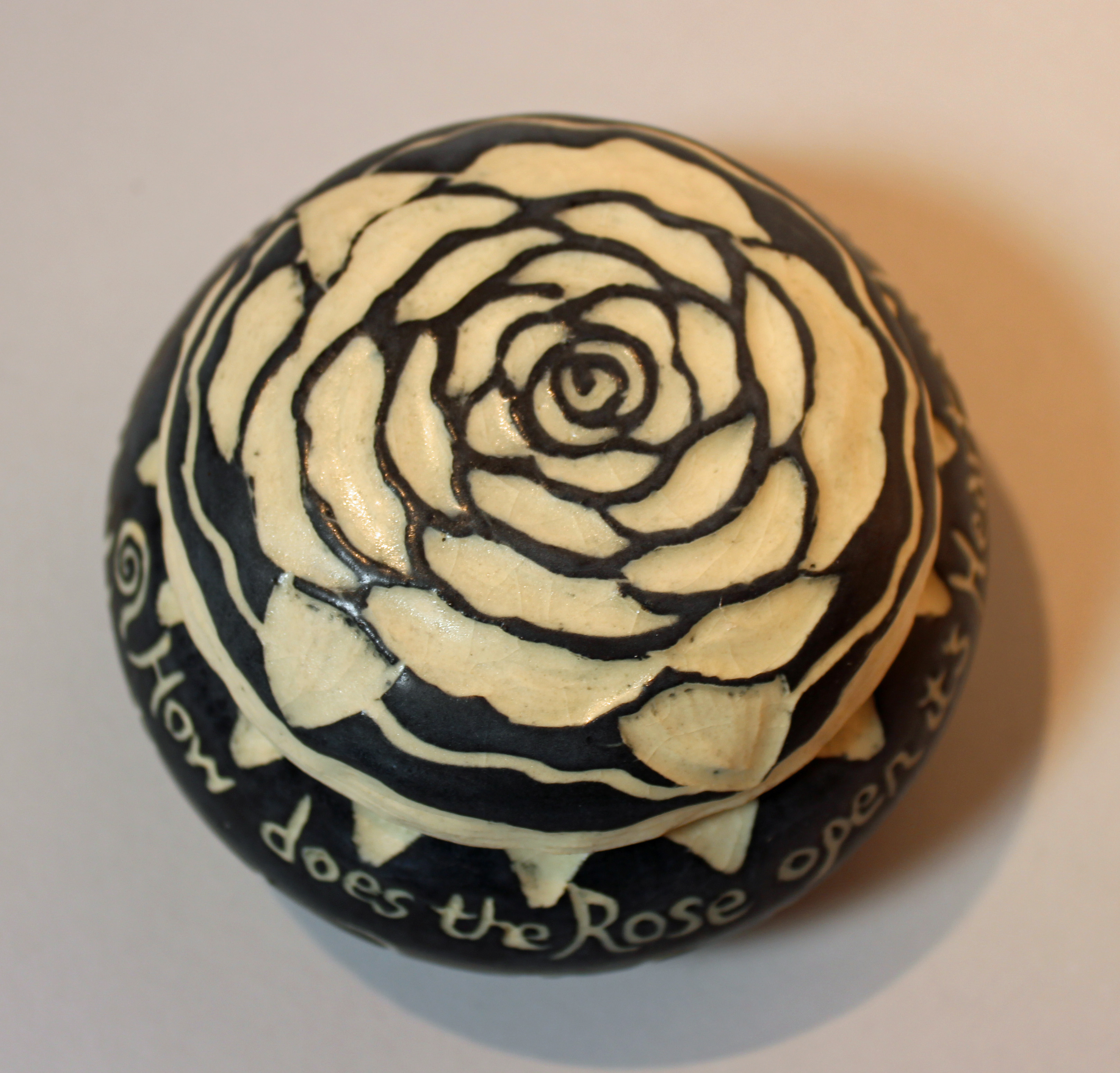I find the process fascinating and the results rewarding. I am able to use my drawing skills combined with carving, a 3-dimensional process.
Once I throw a ceramic piece on the wheel, I allow it to dry to the “leather-hard” stage. The piece is then firm enough to coat the surface of the piece with a fine clay slip, or engobe.
I have a design prepared, and I carefully carve it into the slip, revealing the clay beneath. This creates a strong design contrast, similar to Wood-cuts. The carving requires my focus and patience, for there is no correcting a mistake. If my hand does slip, I work to incorporate the new mark into my design.
I consider this to be an imperfection in the piece, something the ancient Japanese tradition believed to be inherent in a work of art. The Japanese call this “Wabi-Sabi,” and believe all works of art need such an imperfection. I think this is to remind us that we are not striving for perfection in our art or our lives. It reminds us of our humanity.
These last years, I have researched the arts of our ancient ancestors. I am intrigued by the beauty and power of their images, symbols of the universal life force we all share. As I carve them onto my pots, I feel a connection to these artists and to the continuity of life.
I create my pieces to inspire and be useful, to hold something precious; for showcasing a bouquet of flowers, or for containing food or liquid. My goal is to create more beauty in the world and to share it with others.

